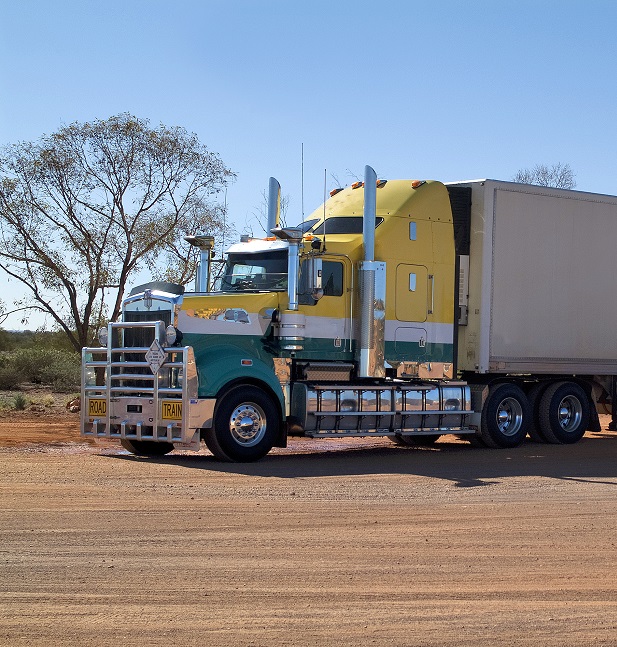Project background
Infrastructure and transport ministers asked the NTC to review the HVNL and find out if it was still fit for purpose. The review explored how to:
- improve safety for all road users
- support increased economic productivity and innovation
- simplify the law, its administration and enforcement
- support the use of new technologies and methods of operation
- provide flexible, outcome-focused compliance options.
Throughout the review we consulted formally through meetings and workshops, and informally through conversations and online.
We also analysed data and researched best practice examples from Australia and overseas. Our research focused on heavy vehicle regulation but included other types of transport regulation for comparison.
The project ended in May 2021 when ministers approved our recommendation to draft a new law. Find out about the next stage of this work.
What we heard
Throughout the project we received feedback that helped us form a clear and accurate picture of problems with the HVNL. We formally consulted with:
- an industry expert panel
- working groups and committees made up of government representatives and the regulator.
We held over a hundred meetings and workshops with these groups. We also heard from heavy vehicle drivers, large and small operators, peak industry bodies, technology providers and the wider community.
Much of the feedback we received was aligned on the key problems with the current HVNL and on options for the future law. But there was also disagreement between our stakeholders on some key issues. This included differences of opinion within industry or across authorities and agencies.
Consultation stages
- From March to October 2019, we released seven issues papers for public consultation and received over 200 online submissions.
- In January 2020, we released a summary of consultation outcomes that outlined the feedback we received.
- In June 2020, we released a consultation regulation impact statement and companion document for public consultation. We received 68 online submissions and over 300 shoutbox comments.
- In May 2021, we used what we learned from all our consultation and research to present recommendations to ministers.
Consultation topics
Effective fatigue management
Consultation period: May – August 2019
This paper examined the problems with the way fatigue management is covered by the HVNL and how the law is applied. It presented a comparison with other fatigue management laws and set out high-level principles that a revised law should cover.
Read the issues paper | Read the submissions
Easy access to suitable routes
Consultation period: June – August 2019
This paper analysed issues with the current access arrangements under the HVNL. It included a comparison with other ways heavy vehicle access is regulated.
Read the issues paper | Read the submissions
Safe people and practices
Consultation period: June – August 2019
This paper set out how the current HVNL manages safety and examined what the HVNL doesn’t regulate. It looked at what is and isn’t working and included a comparison with management of safe people and practices in heavy vehicle transport with other transport modes in Australia.
Read the issues paper | Read the submissions
Vehicle standards and safety
Consultation period: July – August 2019
This paper summarised current vehicle standards and safety provisions in the HVNL and how the law is applied. It explored options for a risk-based approach to managing safety.
Read the issues paper | Read the submissions
Assurance models
Consultation period: August – October 2019
This paper described assurance frameworks and their role, and summarised the way certification is regulated through the HVNL and related instruments. It set out assurance model options for a future HVNL.
Read the issues paper | Read the submissions
Effective enforcement
Consultation period: September – October 2019
This paper looked at how data and technology relate to enforcement and compliance. It explored options for better use of information, technology and data.
Read the issues paper | Read the submissions
A risk-based approach to regulating heavy vehicles
Consultation period: March – May 2019
This paper investigated the way heavy vehicles are covered under the current HVNL. It explored how taking a risk-based approach to regulation might improve the law.
Read the issues paper | Read the submissions
Consultation regulation impact statement
Consultation period: June – November 2020
The regulation impact statement outlined policy options on different issues and the impact the options would have. We also released a companion document - HVNL 2.0 - that set out one example of how the future law could work.
The Safety and Productivity Program will confirm which of the options in this document will be adopted.
Read the regulation impact statement | Read the companion document | Read the submissions
How we used your feedback
Feedback from industry and stakeholders was used at every stage throughout the project:
- The submissions we received early in the review helped shape our issues papers.
- Feedback on the issues papers informed our work on possible solutions.
- The responses we got to our consultation regulation impact statement informed our recommendations to ministers.
Whether you helped us identify problems, suggested solutions, or provided feedback on our ideas, it all helped shape policy direction in some way.
Balancing safety and productivity
Drafting a new law that gets the right balance between safety and productivity is a complex, time-consuming process. Some practical feedback we heard may not make it into the final draft law but there are other ways we can use it. We're working with industry and governments to find the middle ground and move the process forward towards a new HVNL.
Publications
Summarises submissions received as part of consultation for the Heavy Vehicle National Law Review (HVNL).
HVNL 2.0 is designed to be read alongside the RIS as a short-form description of one possible scenario for the future law.
Contact us
- Log in to post comments
